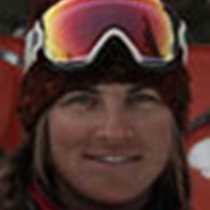Williams Cove & Tracy Arm
After a wonderful afternoon at Petersburg and a flaming sunset through Wrangell Narrows, we arrived this morning at the entrance to Tracy Arm. Then we entered Williams Cove, one of Tracy Arm’s little fingers. The National Geographic Sea Bird was surrounded by stranded icebergs, which were left behind by the tide. Our final full day in SE Alaska together and we were able to hike and kayak one more time.
A winding bushwhack through the hemlock-spruce forest, brought us over and under fallen trees, carefully around the Devil’s Club’s thorns, and over rocky streams. Over and over, we were reminded that we share this forest with others. Coming across a small creek and patches of mud, we found the print of a bear’s front paw in the trail. As we continued our wandering, paralleling the shore, we found another bear sign. A tuft of hair clinging to the sticky spruce sap, possibly left behind when a bear paused to scratch his shoulder against the tree’s scaly bark. We also passed and stepped around pile after pile of seemingly fresh bear scat. Mostly dark green and black scat, as the bears’ primary food source in the spring and early summer is vegetation. Near our return to the beach, we found a muddy, empty pond bed criss-crossed with the prints of wolves, bears and geese.
We also got to see examples of the diversity of ways that things can reproduce here in SE Alaska. Fern leaf golden-thread, with seeds that get launched out of their pods when hit by drops of rain. The chocolate lily, which has the memorable scent of a latrine, attracts flies to its petals for pollination. Cup fungus also uses rain drops to help splash its reproductive spores out onto the forest floor. This temperate rainforest is one of the original and best natural recyclers. When a tree falls, sphagnum moss soon begins to grow in the decaying wood. If a stump is left behind, tiny hemlock or spruce saplings may take root there.
Cruising deeper into Tracy Arm in the afternoon, we could see how the glacier’s advance and retreat changes the landscape and the vegetation. The walls of the u-shaped valley are smoothed in the direction of the glacier’s advance, but now the glacier is retreating and there is a line along the cliffs. The rock is bare where there was once ice, but above, there is leafy green growth. This is a popular place for Harbor Seals to come and pup, giving birth on the floating pieces of ice. We were so excited to see a mother with its pup that looked to have been born just moments before, with the afterbirth still there on the ice.
Leaving Tracy Arm later in the evening, we cruised back into Stephens Passage. The fluffy white clouds were interrupted by occasional patches of sun and light rain seemed to come and go. Perfect conditions for a full rainbow from bow to stern across the mountains of Admiralty Island and goodnight and farewell, for now, to SE Alaska.




